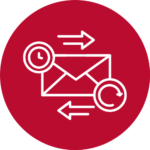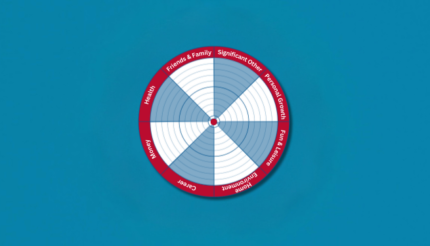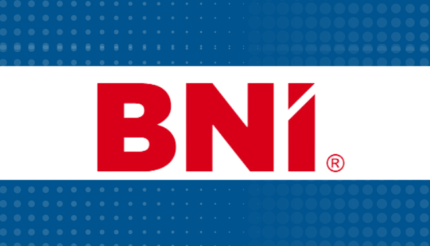Raise Your Hand Marketing: Building Genuine Engagement
Picture yourself in a meeting, eager to contribute to the discussion, or at a restaurant, trying to catch the waiter’s attention. In both scenarios, raising your hand is a polite and effective way to signal interest or need. It’s a simple, universally understood gesture that invites interaction.
Now think back to your school days — when you wanted to join the conversation or answer a question, you raised your hand. This structured way of engaging taught us a valuable lesson early on — an invitation to interact. But, in today’s fast-paced digital world, we often skip the invitation and jump straight to ‘selling’, which can leave our audiences feeling disconnected or even overwhelmed.
We’ve all experienced the sales assistant who jumps on you almost before you have stepped into the shop. It’s off-putting, right? Now contrast that with a conversation where someone invites you to express interest, ask questions or share your challenges. That’s the essence of ‘Raise Your Hand’ marketing — starting relationships by inviting engagement.
Here’s how you can apply this strategy to your marketing efforts and turn casual followers into engaged prospects.
Understanding the Foundation: What is Marketing?
Brad Sugars, founder of ActionCOACH, defines marketing as ‘The process of profitably buying lifetime customers.’ It’s not about one-off transactions but building long-term relationships that deliver value for both sides. With this perspective in mind, let’s break down the key steps in effective ‘Raise Your Hand’ marketing.
 Step 1: Define Your Target Audience
Step 1: Define Your Target Audience
The more specific your audience, the more impactful your message. Start by identifying your broad target group and then narrow it down into highly focused segments.
Product-Based Example:
- Broad Category: Craft Businesses
- Narrow Category: Candle Makers
- Super Targeted Category: Artisanal Candle Makers Focused on Eco-Friendly Products
For this audience, challenges could include sourcing sustainable materials or creating a strong online presence. Content could include a blog about suppliers of eco-friendly candle wax, an infographic on how to market eco-conscious products, or a tip sheet for selling on platforms like Etsy or Amazon Handmade.
Service-Based Example:
- Broad Category: Fitness Professionals
- Narrow Category: Personal Trainers
- Super Targeted Category: Personal Trainers Specialising in Post-natal Fitness
The challenges for this audience might include finding effective ways to market their services to new mums or building strong client retention. Content ideas could focus on creating a blog about marketing tips for niche fitness services, a checklist for client onboarding processes, or a video series to position themselves as experts in their niche.
You could also dive deeper into their world using tools like Google Trends to uncover what they’re searching for and what content resonates with them.
 Step 2: Create Content That Addresses Their Needs
Step 2: Create Content That Addresses Their Needs
Your content should provide solutions to the problems your audience faces. For example, if your research shows that artisanal candle makers are looking for better financing options, craft content around that topic, such as:
- A blog about alternative financing methods
- A checklist for evaluating funding opportunities
- A video on best practices for securing a business loan
When you address real pain points with actionable advice, you establish yourself as a trusted resource.
 Step 3: Offer value without overloading
Step 3: Offer value without overloading
Don’t flood your audience with information all at once. Instead, break your content into bite-sized pieces and share it strategically. For example, post a headline like: ‘Looking for innovative financing options? Comment ‘FINANCE’ below to learn more!’ This approach invites your audience to engage and ‘raise their hand,’ expressing interest in your content.
You can also ask followers to direct message (DM) you for a link or resource. This personal interaction fosters deeper connections and builds trust.
 Step 4: Respond promptly and build relationships
Step 4: Respond promptly and build relationships
When someone comments or sends a message, make it a priority to respond quickly. This keeps the momentum going and shows that you value their engagement. Use follow-up conversations to gather feedback and learn more about their needs. This is especially important if you schedule your posts ahead of time – make sure to check into the platforms and respond to comments.
 Step 5: Mix up your content
Step 5: Mix up your content
While ‘Raise Your Hand’ posts are powerful, variety keeps your audience engaged. Rotate through different types of content to maintain interest and appeal to different preferences.
Ideas for Content Formats:
- Blogs
- Videos
- Interviews
- Infographics
- Tip sheets
- Checklists
- White papers
- E-books
- Curated articles
You could start with a detailed blog that dives deep into an issue your audience is facing, then break it into smaller, digestible pieces — like short social media posts, an infographic summarising key insights, or a quick video highlighting your findings.
You could also develop a handy checklist or tip sheet with practical advice. Additionally, share valuable articles or resources from others that your audience will engage with and find interesting.
By offering a mix of educational, entertaining and inspiring content, you’ll keep your audience coming back for more.





